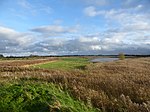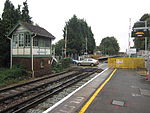Spires Academy
The Spires Academy is a non-selective secondary school for pupils aged 11–16 in Canterbury, Kent. There is a sixth form. The school has dual specialist status in business and enterprise, and in visual, creative and performing arts. Spires is independently governed, but funded by the sponsors and the Department for Children, Schools and Families. As a non-selective school the school does not insist on prospective pupils passing the eleven-plus examination for entry, and it is free to attend. The Academy is subject, like other schools, to regular inspections, but is managed by an ‘Academy Trust’ called E21C, rather than a local education authority. According to Ofsted inspectors, boys do worse at maths at the school, and generally the school needs to improve (academically). The school has developed strong links with Simon Langton Girls' Grammar School in nearby Canterbury.
Excerpt from the Wikipedia article Spires Academy (License: CC BY-SA 3.0, Authors).Spires Academy
Canterbury
Geographical coordinates (GPS) Address Nearby Places Show on map
Geographical coordinates (GPS)
| Latitude | Longitude |
|---|---|
| N 51.311537 ° | E 1.147902 ° |
Address
CT2 0FF Canterbury
England, United Kingdom
Open on Google Maps








